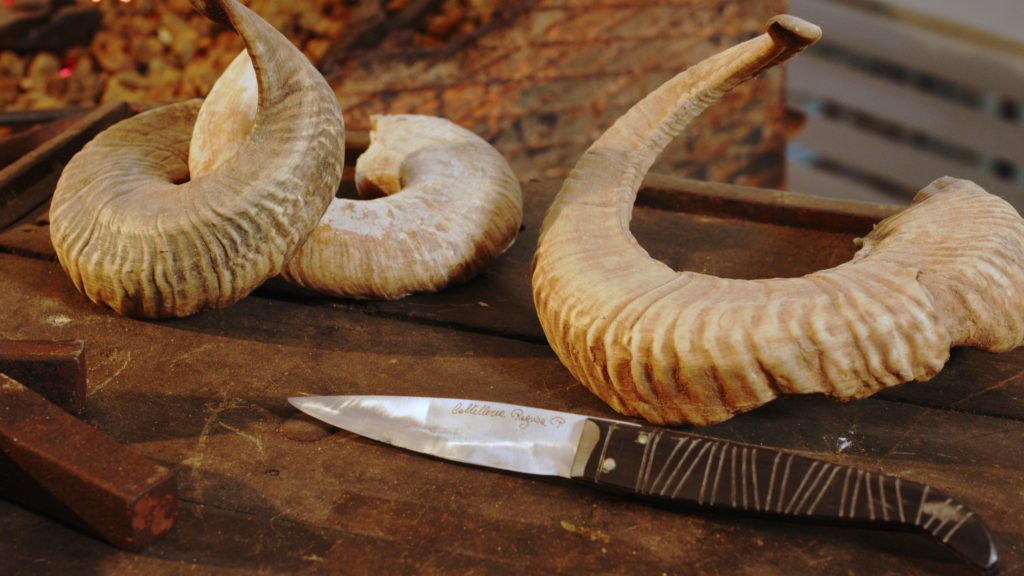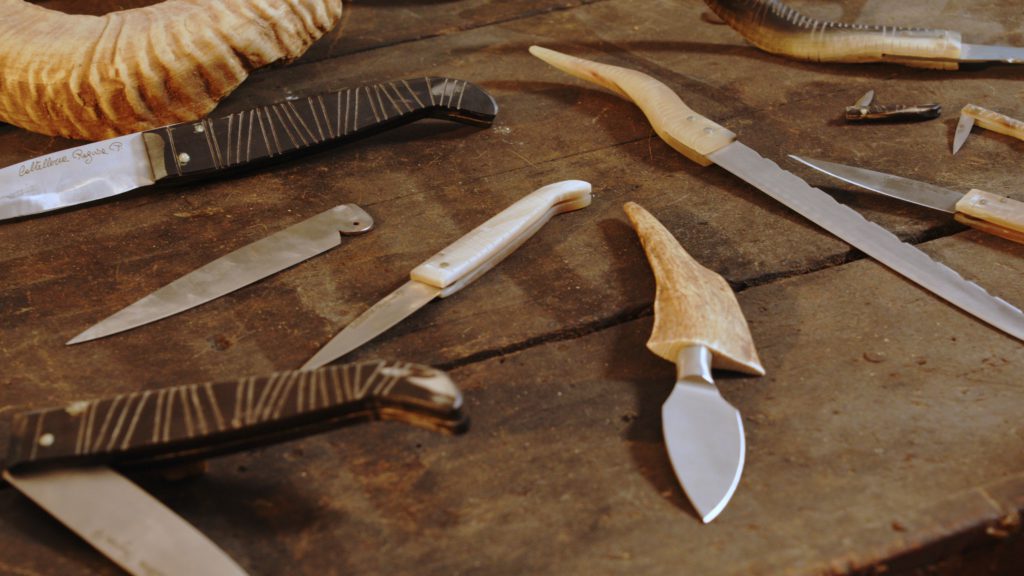The Bisacquino Knife
The craft of knife-making in Bisacquino has ancient origins, rooted in long-standing local traditions of metalworking, and has always represented an integral part of local craftsmanship. Today, knife production is carried out within a structured economic and artisanal framework, yet the origins of this practice lie in a heritage transmitted across generations, when knives were forged as a natural extension of traditional ironworking skills.
During the 20th century, Bisacquino became widely known for its knife production. Since the 1960s, numerous workshops of cutiddari (traditional knife-makers) were active in the town. When considering the history and techniques of knife production, this practice can be interpreted as a form of intangible cultural expression that embodies the collective memory and craftsmanship of the Bisacquino community. The knife thus reveals layers of meaning and identity tied to local knowledge systems and community values. Even the name of the town, “Bisacquino” (from the local dialect busukin), reflects the cultural and symbolic importance of the knife.
Mastering this craft requires specific skills and access to certain raw materials, particularly goat and sheep horn, which are used to fashion the handle—one of the defining features of the Bisacquino knife. From a material culture perspective, the knife embodies a dialogue between two distinct material elements: the “natural” substance of the animal horn used for the handle and the forged steel of the blade. The process of shaping and finishing the horn—known locally as abbruscatura—is a highly specialized technique that requires dexterity and experiential knowledge passed down through apprenticeship.
This element has been included in the Register of Intangible Heritage of local interest of the Municipality of Bisacquino, as part of Intervention “Activation of the Observatory on the Intangible Cultural Heritage of the Territory through the application of the REIL methodology – Register of Intangible Heritage of Local Interest”, within the “BISACQUINO, BORGO DEL CINEMA E DELLE ARTI” project, funded by the NRRP (National Recovery and Resilience Plan), Mission: Digitalisation, innovation, competitiveness, culture and tourism, Component: Tourism and culture 4.0, Investment 2.1 “Attractiveness of villages” CUP D99I22000160006.



